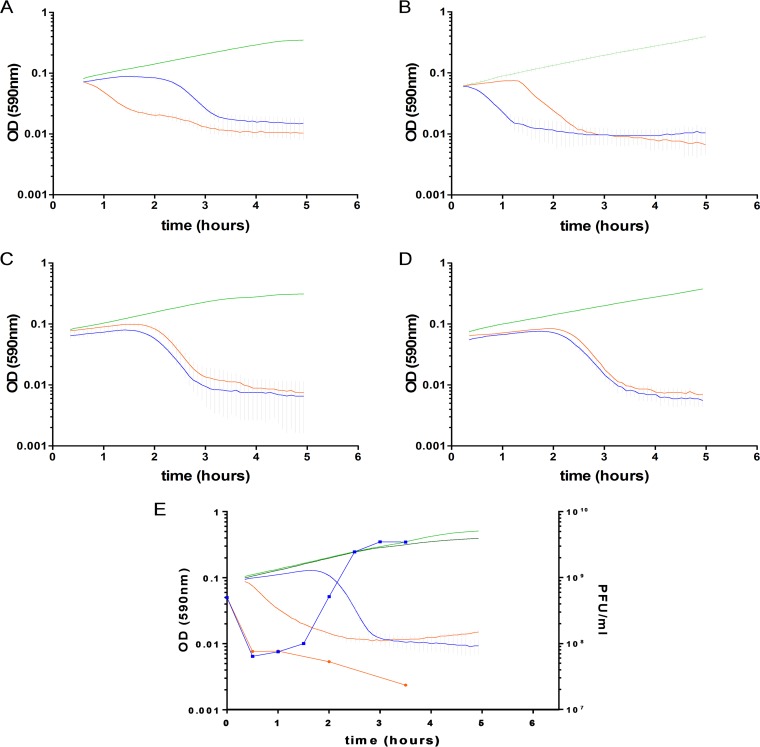FIG 7.
Abortive infection by the SpnIII system. Bacterial cell fate and viability were determined by the hsdS allele conformation and by the infecting phage genome methylation status. (A) The spnDP1004IIIA-locked mutant was infected with SpnIIIA-methylated (blue; MOI = 2.5) and SpnIIIA-nonmethylated (orange; MOI = 2.5) SpSL1 phages. (B) The spnDP1004IIIB-locked mutant was infected with SpnIIIB-methylated (orange; MOI = 2.5) and SpnIIIB-nonmethylated (blue; MOI = 2.5) SpSL1 phages. In both cases, the nonrestricted phage killed the cells after completion of the lytic cycle, while the supposedly restricted phage induced a rapid and progressive lysis. When infecting an spnDP1004III deletion mutant (C), the phage underwent a lytic cycle irrespective of its methylation status (SpnIIIA methylated, blue; SpnIIIB methylated, orange; MOI = 2.5). The same outcome was achieved by inactivating the restriction subunit of spnDP1004III alone (D). In panels A to E, uninfected bacterial strains are depicted in green. The one-step growth curves (infecting free viral particles were measured each 30 min after infection) in panel E confirmed the production of phage progeny when SpSL1 was not restricted (as with the SpnIIIA-methylated phage infecting the spnDP1004IIIA-locked mutant [blue lines]; light green, uninfected control) or the absence of phage replication when SpSL1 was restricted by SpnDP1004III (as with the SpnIIIA-methylated phage infecting the spnDP1004IIIB-locked mutant [orange lines]; dark green, uninfected control). The SpSL1 burst size was 20 PFU.

